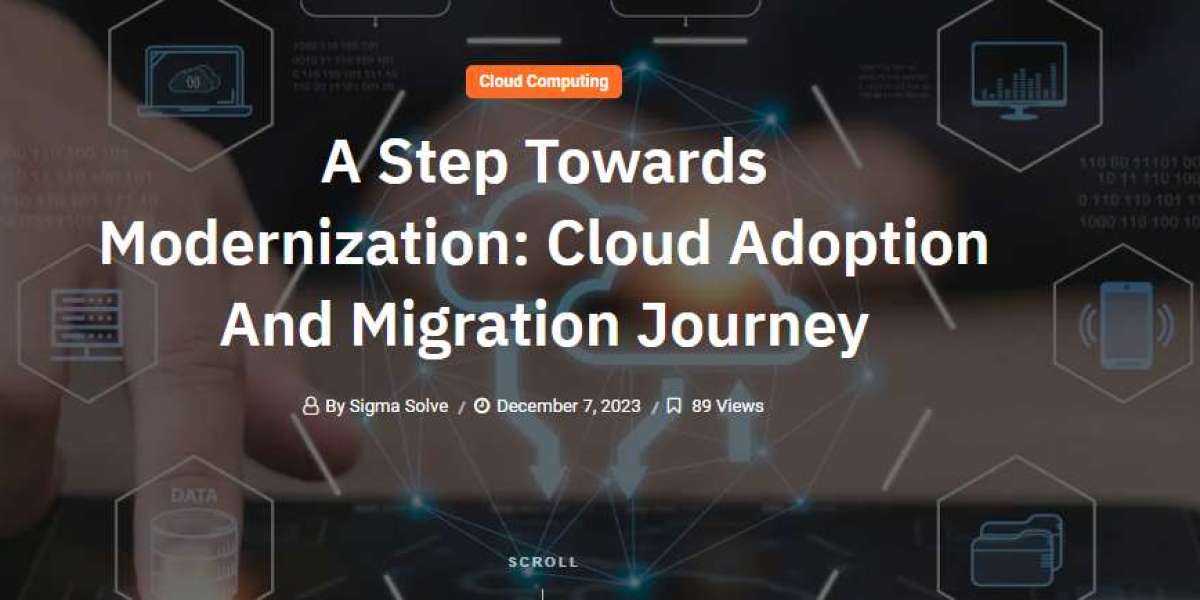Cloud computing is one of the buzziest words on the internet today. However, today’s cloud computing is completely different from what J. C. R. Licklider invented in 1969. Despite being efficient, secure, and cost-effective, businesses were reluctant to adopt cloud computing. Covid, though, changed everything about cloud computing.
Today, cloud migration has become a prime necessity for businesses to modernize business processes digitally and, of course, to cut costs. In this blog, we’ll explore the cloud migration journey and adaptation process to evaluate the advantages and disadvantages of relocating the IT infrastructure to the cloud for businesses.
Globally, the cloud computing market will surpass $1 trillion by 2028: Precedence Research
What Is Cloud Migration?
Cloud migration is a journey of relocating digital assets of businesses from in-house IT infrastructure to cloud-based IT infrastructure. This cloud adoption can either be wholesome or partial. Nevertheless, it includes data, applications, services, and resources.
The global cloud computing market grew from $24.63B in 2010 to $156.4B in 2020. That’s a 635% jump: CloudZero
What Is Cloud Adoption?
Fundamentally, cloud adoption is a strategy to migrate businesses’ digital assets from physical servers to cloud servers. A cloud adoption process that documents guidelines, best practices, and tools defines an action plan to adopt, optimize, and accelerate the cloud migration journey with a specific outcome in mind.
Cloud-based workloads account for 75% of workloads in 1 out of 5 organizations: Fortinet
Why Is A Cloud Adoption Strategy Important?
Nobody is asking why cloud computing. Moving to the cloud is no longer an aspiration for businesses but a compulsion, given its benefits. However, a large number of businesses are far from achieving their goals of moving to the cloud. Therefore, businesses must have an invincible cloud adoption strategy.
Digital transformation is inevitable for businesses, and relocating IT infrastructure to the cloud is a step toward business modernization. However, cloud migration is a complex web of processes that requires in-depth consultations and diligent implementation with a cloud consulting services provider.
Without a centralized cloud adoption strategy, businesses may become victims of “cloud sprawl,” increase the cost of cloud migration, and fall prey to cyber threats.
What Are The Common Challenges For Cloud Migration?
Every coin has two sides, and so does the cloud migration. Cloud migration does face challenges, but to term them as risky is an exaggeration. These challenges can easily be overcome with in-depth consultation with cloud consulting service providers.
Cloud Migration Strategy Absence
The enthusiasm to migrate to the cloud among businesses is inspiring. Still, without proper guidance and a step-wise cloud migration strategy, businesses may come back to square one. Businesses should carefully design a strategy that identifies the right cloud service provider, an exact framework, a proper distribution model, adequate security, and efficient data processing models to leverage cloud computing.
Complex Legacy Architecture
Due to years of upgrading existing on-premise IT architecture, the entire infrastructure may have become too complex for cloud migration service providers to access, fragment, and migrate to the new, more organized infrastructure that the cloud provides. The interdependencies of applications and resources discourage businesses from moving to the cloud from their legacy IT architecture.
Lengthy Migration Process
Cloud migration is not a one-click process but a segregated process that should be completed in a number of phases to eliminate various vulnerabilities. The speed and clarity of the cloud migration process depend on how complex and cumbersome the existing legacy infrastructure is. Determining various stages of migration without a cloud migration strategy undermines the cloud migration benefits.
Expensive Cloud Migration
The more complex your existing IT infrastructure is, the more lengthy the cloud migration process becomes, accelerating the cost of cloud migration. A well-defined cloud migration strategy can help businesses identify the costs for each stage and step and allow businesses to optimize the processes to ensure expenses do not cross the budget limits. A research-based migration plan can drive the costs down.
Data Security Risks
One of the major concerns for businesses is data security and compliance with data privacy. Since corporate data is stored on remote servers and can be accessed only through the Internet, applications are also remotely available, which increases worries about cyber threats. The cloud providers have been enhancing the security apparatus on clouds, but taking businesses into confidence is a different ball game.
What Are The Advantages Of Cloud Migration?
The advantages of adopting cloud computing are countless and definitely outweigh the disadvantages. The key advantages are related to cost, efficiency, and data security.
Cost-Efficiency
Building an in-house IT infrastructure is extremely costly. Moreover, there are add-on expenses. In addition, businesses need to keep upgrading it to be in line with technological advancements. Contrary to that, the cloud offers flexibility in using the infrastructure on a pay-as-you-use basis. On top of that, businesses are set free from capital investment for IT hardware.
Improved Customer Service
Customer satisfaction has become of paramount importance for businesses to enhance revenue sources and peep competition. The cloud allows businesses to collaborate with clients in real-time to provide critical support, improving uptime at the client’s end. Moreover, customer feedback allows businesses to improve their services in real-time.
Disaster Recovery
The uncertainties in life and business remain the same. Businesses are also prone to accidents and disasters. Usually, businesses spend a large amount to prevent disasters and recover from them. The cloud reduces the possibility of disaster and allows businesses to recover from disasters almost at no extra cost. It also helps businesses save their time, energy, and resources to recover from disasters.
Enhanced Data Security
Cloud services are adapting stringent security measures to protect data and comply with data privacy regulations. Moreover, securing data on a vast network of servers is far more cost-effective for cloud providers compared to in-house servers. With changing trends, cloud providers are leveraging AI to track, monitor, and eliminate security-related threats.
Environmentally Friendly
As humans, we are all witnessing climate change and its adverse impact on us. Cloud technology reduces the burden on industries and frees them from creating massive infrastructure that is detrimental to the environment. Adapting to cloud technology allows various industries to reduce their carbon footprint. Moreover, scalability helps clouds measure and cut carbon emissions.
How can Sigma Solve help you?
Sigma Solve, an Amazon Web Services and Microsoft Silver partner, offers managed cloud computing services for AWS and Azure. By transitioning to the cloud, organizations can reduce costs and complexity while accessing secure and scalable environments.
Sigma Solve helps businesses transition to the cloud by offering cloud consulting services, enabling businesses to leverage cloud platforms for enhanced customer relationship management, sales automation, and process optimization.
For more info: https://sigmasolve.com/a-step-towards-modernization-cloud-adoption-and-migration-journey/



